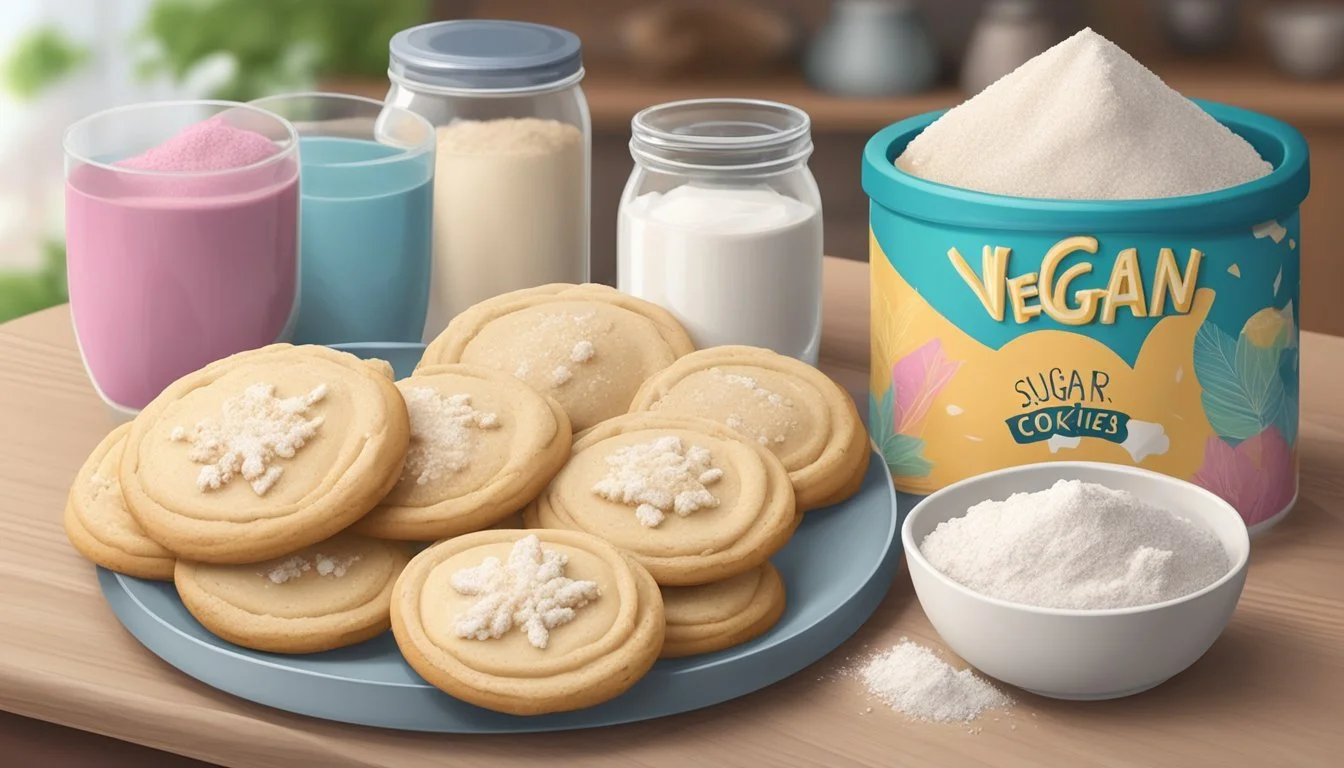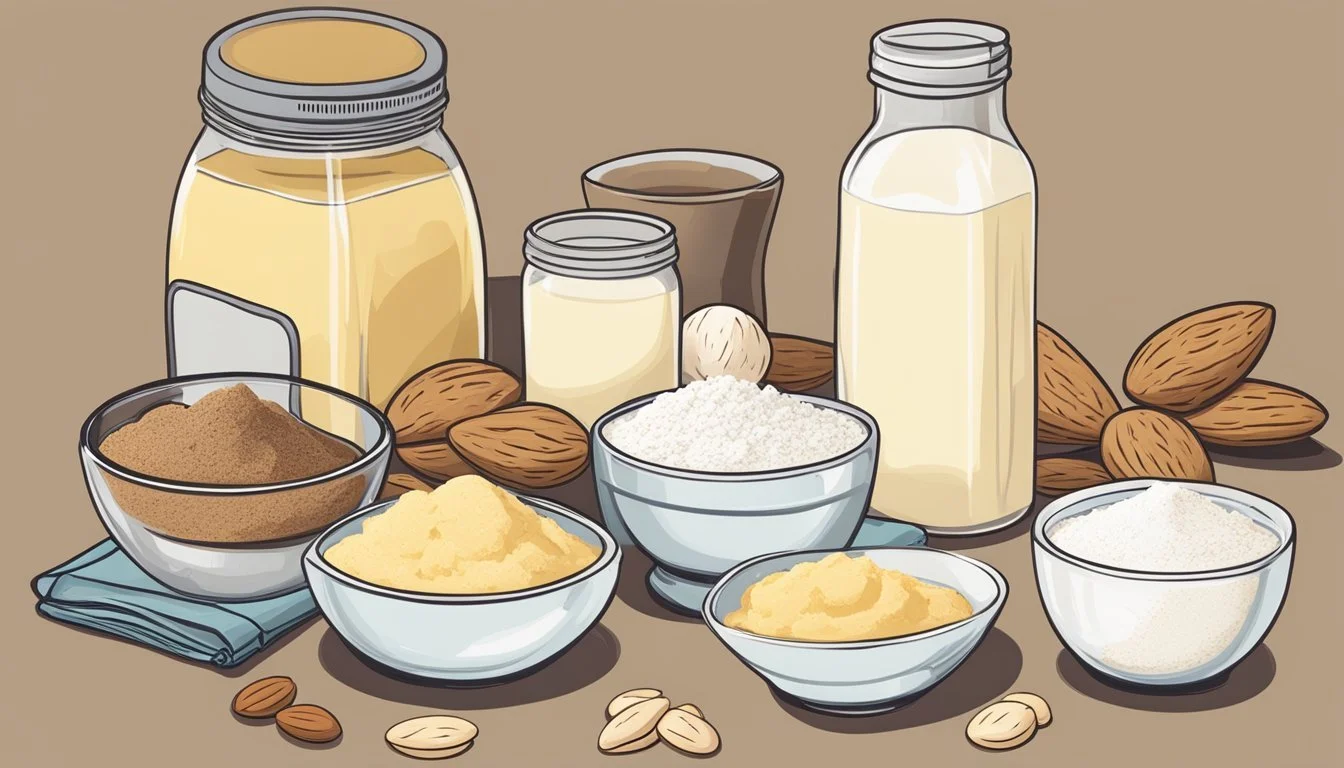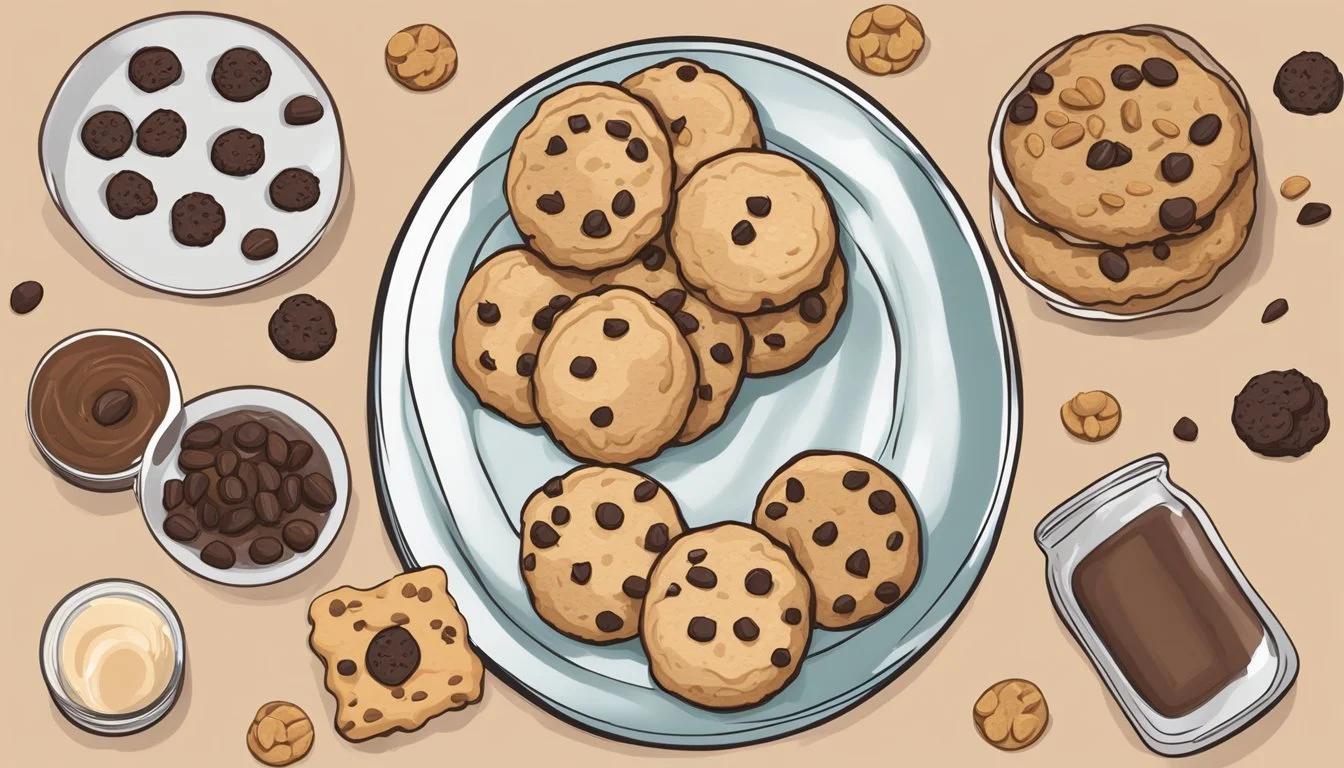Are Sugar Cookies Vegan?
Unveiling the Truth Behind the Sweet Treats
Determining whether sugar cookies are vegan depends on the ingredients used in their preparation. Traditionally, sugar cookies require ingredients that are not vegan-friendly, such as butter derived from cow's milk and eggs. However, due to growing dietary preferences and ethical considerations, many bakers have modified the classic sugar cookie recipe to cater to vegan diets.
Vegan sugar cookies omit animal products, embracing alternatives like plant-based milks, vegan butters or oils, and binding agents such as cornstarch to replace eggs. The sweetness in sugar cookies sometimes poses a concern, as certain sugar refining processes use bone char, making some sugars non-vegan. Nonetheless, many sugar brands offer vegan-friendly options, ensuring that the entire recipe adheres to vegan standards.
When it comes to flavor and texture, vegan sugar cookies can rival their non-vegan counterparts. Recipes can be tailored to achieve the characteristic lightness and crispiness of traditional sugar cookies, often through meticulous testing and adjustment of ingredients. These vegan desserts offer inclusivity for those following a plant-based diet without compromising on the indulgence of a well-loved treat.
Understanding Veganism
Veganism goes beyond diet; it is a lifestyle choice that excludes all forms of animal exploitation and cruelty, whether for food, clothing, or any other purpose. This section explores the essential criteria that determine whether a product can be labeled vegan and highlights common ingredients in cookies that are not vegan-friendly.
What Makes a Product Vegan?
A product is considered vegan if it contains no animal-derived ingredients or by-products. In the context of food, this means the absence of meat, dairy, eggs, and honey, among other animal-sourced substances. Vegan products also avoid indirect animal products such as gelatin, which is derived from animal collagen, and carmine, a red dye made from crushed insects.
Vegan components often found in cookies include:
Butter: Plant-based alternatives made from oils like coconut, almond, or soy.
Sugar: Unrefined or non-bone char processed to ensure no animal products are used in its production.
Egg Replacer: Various substitutes like flaxseed meal, chia seeds, or commercial egg replacement powders.
Dairy-Free: Milk solutions derived from plants such as almond, soy, coconut, or oat milk.
Vegan Food Coloring: Synthetic or plant-based colorants free from animal-derived ingredients.
Common Non-Vegan Ingredients in Cookies
Cookies, particularly commercial and traditional recipes, often contain several ingredients that are not vegan-friendly. Understanding these can help vegans make informed choices and find or craft suitable alternatives.
Non-vegan ingredients commonly found in cookies:
Butter: Traditionally made from cow's milk.
Eggs: Used as a binding agent and to add moisture.
Milk Chocolate: Contains dairy milk.
Refined Sugar: Sometimes processed with animal bone char to achieve its white color.
A careful examination of labels or recipes is vital for those committed to veganism to avoid these non-vegan items.
Ingredients for Vegan Sugar Cookies
Crafting vegan sugar cookies involves selecting plant-based alternatives to traditional ingredients. Precision in ingredient selection ensures the cookies achieve the desired taste and texture.
Substitutes for Traditional Ingredients
Butter: Vegan butter is a crucial substitute for dairy butter, providing the necessary fat without animal products. Granulated Sugar: To ensure it's vegan, one must opt for granulated sugar not refined with bone char.
Milk: Almond milk is a common dairy substitute providing moisture; other plant milks can also be used. Egg: A combination of cornstarch and additional almond milk often replaces eggs as a binding agent.
All-Purpose Flour: This is a staple in vegan cookie recipes, serving as the primary structure for the cookies.
Flavor Enhancers
Vanilla Extract: Pure vanilla extract adds depth to the cookie's flavor profile. Almond Extract: It's slightly less common but enhances flavor intricacy and is found in various recipes.
Salt: A touch of salt balances the sweetness and rounds out the flavor.
Gluten-Free Alternatives
Gluten-Free All-Purpose Flour: This can replace traditional flour for those avoiding gluten, ensuring a similar texture. Ensure it's a 1:1 substitute.
Oat Flour and Spelt Flour: These are other gluten-free options that can impart a unique taste and are often used by those preferring whole grains.
The Baking Process
The preparation of vegan sugar cookies involves a series of steps that are crucial for achieving the desired texture and taste. Precision with mixing methods, the rolling and cutting of dough, and the correct baking and cooling techniques are vital components of the process.
Mixing Methods
In the making of vegan sugar cookies, the initial focus is on creating the perfect dough consistency. A stand mixer or hand mixer is commonly employed to cream together the vegan butter and sugars until the mixture appears fluffy and light. This process incorporates air, which is essential for the cookies' texture. Plant-based milk and flavor extracts are then added and mixed until thoroughly combined. Lastly, the dry ingredients are gradually introduced to the wet mixture, ensuring a cohesive cookie dough is formed.
Rolling and Cutting Dough
Once the dough has reached the appropriate consistency, it's time for shaping. The dough can be rolled out on a surface dusted with flour or powdered sugar using a rolling pin. A tip for even thickness is to use parchment paper above and below the dough during rolling. Cookie cutters are then used to cut out the desired shapes before carefully transferring them onto a baking tray or baking sheets lined with parchment paper or a silicone baking mat.
Baking and Cooling
The prepared dough shapes are placed in a preheated oven to bake. The temperature and time are essential; typically, 350°F is appropriate, with the baking time depending on the size and thickness of the cookies. After baking, the cookies should be gently transferred to a wire cooling rack to cool completely, which will prevent them from turning soggy and help maintain their crisp edges. Properly baked vegan sugar cookies exhibit a delightful golden color and a firm edge while maintaining a soft center.
Decorating Vegan Sugar Cookies
Decorating vegan sugar cookies can be just as creative and vibrant as their non-vegan counterparts. Utilizing vegan icing options and specific coloring and decorating techniques ensures that the cookies not only look appealing but also adhere to vegan dietary preferences.
Vegan Icing Options
Royal Icing: Traditional royal icing is made with egg whites, but for a vegan version, one can use aquafaba—the liquid from a can of chickpeas—as a substitute. Mix aquafaba with powdered sugar and a small amount of lemon juice to reach the desired consistency.
Buttercream Frosting: To make vegan buttercream, combine vegan butter with powdered sugar, a splash of non-dairy milk—such as almond milk—and flavorings like almond extract as needed.
Coloring and Decorating Techniques
Natural Food Coloring: For coloring icings, opt for natural food coloring or use concentrated juices like beet juice for red or pink hues. It's essential for the colors to be vibrant without using artificial dyes.
Piping and Spread Techniques:
Piping Bag: Fill a piping bag with vegan icing to create precise lines and borders on sugar cookies with icing.
Squeeze Bottle: For filling in larger areas or more fluid designs, a squeeze bottle can be an effective tool.
Creating Shapes: Vegan sugar cookie dough can be rolled out and cut into a variety of shapes using cookie cutters. Decorating should complement the shape and theme of the cookie.
Sugar Cookie Decorating: With a steady hand and a collection of nozzles, one can create intricate designs or write messages on their cookies. The icing should be of the right consistency to hold its shape when piped.
Decorating vegan sugar cookies is about precision, choice of colors, and ensuring that all ingredients used are free of animal products. With these guidelines, one can craft both aesthetically pleasing and delicious vegan treats.
Preserving and Storing
When it comes to preserving sugar cookies, the priority is maintaining their freshness and texture. Proper storage methods can extend the life of cookies, while planning allows for enjoying cookies as if they were just baked.
Proper Storage Methods
Sugar cookies should be stored in an airtight container to keep them crisp. The container can be made of glass or plastic, but it is critical that the lid seals tightly. For added protection, one can also wrap the cookies in plastic wrap before placing them in the container. If cookies are frosted, they should be stored in a single layer to prevent the icing from being ruined. In cases where stacking is necessary, parchment paper can be placed between each layer to prevent them from sticking together.
If one intends to keep sugar cookies for more than a week, they can be stored in a freezer-friendly, sealed container or a freezer bag to prolong their freshness. Ensure that all air is squeezed out of the Ziploc or freezer bag before sealing to prevent freezer burn. Sugar cookies can be frozen for up to three months. Thaw them at room temperature while still wrapped to prevent condensation from softening them.
Making Cookies in Advance
For those who wish to prepare sugar cookies in advance, the dough can be stored in the freezer. Wrap the dough tightly in plastic wrap, then place it in a Ziploc or sealed container before freezing. To use, thaw the dough in the refrigerator overnight, then let it sit at room temperature until it’s pliable enough to roll out.
One can also freeze baked, unfrosted sugar cookies. After baking, allow the cookies to cool completely. Then, wrap individual cookies in plastic wrap and place them in an airtight container before transferring to the freezer. This method makes it easy to remove and thaw only as many cookies as needed while keeping the rest frozen.
Vegan Cookie Variations
When one adopts a vegan diet, they don't have to miss out on delightful treats. Vegan cookies can be modified from traditional recipes to exclude animal products without compromising taste. These variations often include plant-based milk, oils, or butters and might utilize organic sugar to ensure no animal byproducts are present in the refinement process.
Chocolate Chip and Peanut Butter Cookies
Vegan chocolate chip cookies are a classic go-to. They can easily be made by swapping out dairy-based chocolate and butter for vegan alternatives, such as dairy-free chocolate chips and coconut oil. Vegan peanut butter cookies take advantage of natural peanut butter's creamy texture and may use flaxseed meal as an egg substitute, which provides the necessary binding properties.
Ingredients:
Dairy-free chocolate chips
Natural peanut butter
Flaxseed meal (as egg substitute)
Gingerbread and Snickerdoodles
Vegan gingerbread cookies embrace the warmth of the holidays with spices like ginger, cinnamon, and nutmeg. These cookies can be made with vegan butter and organic sugar to maintain the vegan integrity of the holiday treat. Vegan snickerdoodles receive their characteristic tang and chewiness from cream of tartar and are rolled in a mixture of organic sugar and cinnamon before baking.
Spices for Gingerbread:
Ginger
Cinnamon
Nutmeg
Thumbprint and Holiday Cookies
Vegan thumbprint cookies can be enjoyed year-round with variations like raspberry or apricot jam centers. Making these festive cookies vegan requires the use of plant-based butters and organic sugar. For Christmas and other holiday cookies, shapes and colors can be customized, while using natural food dyes and vegan royal icing for decoration.
Thumbprint Fillings:
Raspberry jam
Apricot jam
Each vegan cookie variation retains the essence of its traditional counterpart while being completely cruelty-free.
Dietary Considerations
When adapting sugar cookies for a vegan diet, one must consider alternative ingredients for dairy and eggs, the source and processing of sweeteners, and common dietary restrictions related to allergies and intolerances.
Non-Dairy Milks and Fats
In vegan sugar cookies, non-dairy milks such as almond milk, soy milk, and other unsweetened plant-based milks serve as substitutes for cow's milk. For fats, options like coconut oil and vegan butter brands like Earth Balance can replace traditional butter. These are essential for achieving the desired texture without using animal-derived products.
Milk alternatives: Unsweetened plant-based milk (e.g., almond, soy)
Fats: Coconut oil, vegan butter (e.g., Earth Balance)
Sweeteners and Flavorings
The right choice of sweeteners and flavorings is crucial in maintaining the taste profile of sugar cookies while being mindful of vegan standards. Cane sugar is a common sweetener, however, it's important to ensure it's not processed with bone char. Plant-based alternatives like agave syrup or maple syrup can be used for both sweetening and adding distinct flavors.
Sweeteners: Unrefined cane sugar, agave, maple syrup
Flavorings: Vanilla extract, almond extract
Allergies and Intolerances
It's also important to address common allergies and intolerances. Some individuals may need soy-free options or a flax egg as an egg substitute. Vegan sugar cookies can accommodate these needs with variations in the recipe, ensuring everyone can enjoy them without concern.
Egg alternatives: Flax egg (flaxseed meal mixed with water)
Soy-free: Use soy-free vegan butter and almond or coconut milk as a milk alternative
Troubleshooting Tips
When baking, achieving the perfect cookie texture can be elusive, and decorating can also present its challenges. Substituting ingredients should be done with care to maintain the integrity of the cookies.
Cookie Texture Adjustments
To ensure soft cookies with crispy edges, the key is balance in the baking time and temperature. If the cookies come out too hard, they may have been overbaked. Reducing the oven time by a couple of minutes can help achieve that soft center. Conversely, for a crisper cookie, one can extend the bake time slightly. Adding a bit of cornstarch to the dough can offer a tender bite, as it inhibits gluten formation.
Decorating Mishaps
Decorating sugar cookies should be fun, but sometimes errors occur. If the icing is too thin, adding more powdered sugar will thicken it up. If it's too thick, a small addition of water or non-dairy milk can thin it to the desired consistency. For uniform decorations, use piping bags with the right-sized tip and let the base layer of icing dry before adding more layers or colors.
Ingredient Substitutions
Substituting ingredients can be tricky. When replacing butter with oil, one should be cautious with the quantity since oil is more liquid than butter, which can affect cookie structure. For flavor variations, spices like cinnamon and cardamom can be added carefully, as a little goes a long way. Always whisk dry ingredients thoroughly to evenly distribute these spices.








